That cramp you feel deep in your palm while writing?
The sudden struggle to button your shirt or pick up a coin?
And even more worrisome, your grip strength seems to be fading.
Before your mind jumps to worst-case scenarios, take a moment to learn about the adductor pollicis muscle. It’s often overlooked, but essential for pinch, power, precision, and grip strength. If it's irritated or weak, it can disrupt everything from writing a note to using your phone.
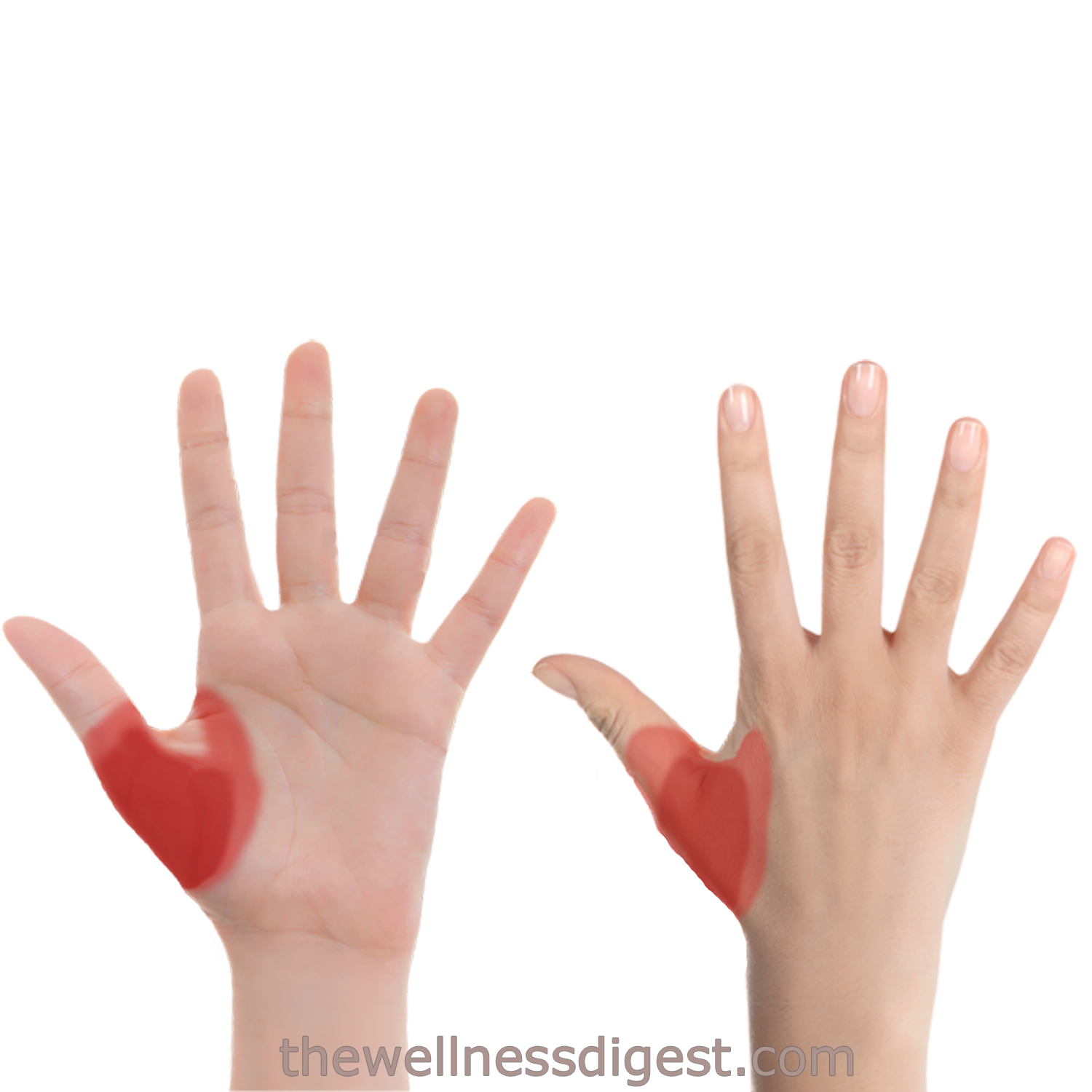
The adductor pollicis muscle contributes to pain in the thumb pad and thumb.
Table of Contents
Where Is The Adductor Pollicis Muscle?
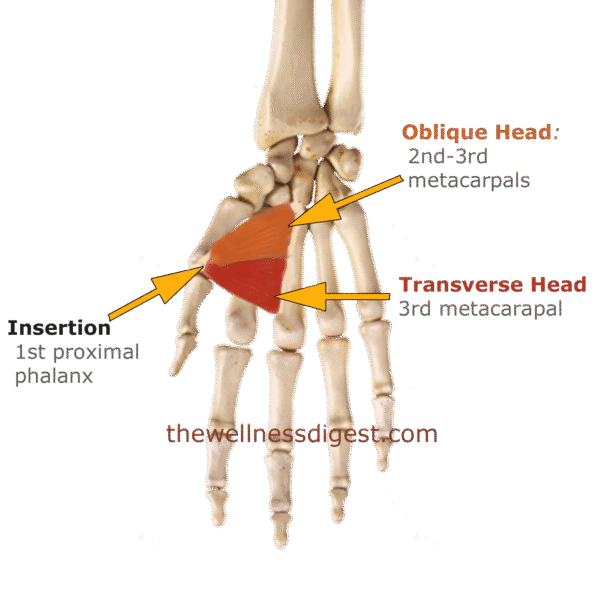
The AP is one muscle with two heads that provides reliable grip strength and control.
The adductor pollicis lies deep in the palm of your hand, at the base of the thumb where the thumb meets the hand. It is shaped like an open hand-held fan, wide at the top, narrowing where it connects to the thumb. This distinctive shape provides both strength and precision.
It has two sections called heads that come from different directions, join together, and connect to the same point at the base of the thumb.
- The oblique head starts in the lower palm, near the base of your middle and index fingers, angling diagonally toward the thumb.
- The transverse head runs straight across the palm from the base of the middle finger directly to the thumb’s inner base
The two heads join together and connect at the base of the thumb bone. The joining point gives the muscle its power to pull the thumb inward toward the palm
For Detailed Anatomy, see: The Adductor Pollicis Anatomy Page
What Are The Movements Of The Adductor Pollicis?
The adductor pollicis is responsible for thumb adduction. It pulls the thumb in toward the hand and the index finger.
But it’s not just about the movement; this muscle provides precision and power to the hands:
- Holding objects with a pinch grip
- Stabilizing the thumb during writing, texting, and tool use
- Helping you do detailed or forceful tasks with your hands
Everyday tasks that rely on this muscle include:
- Using scissors or pliers
- Cooking (chopping, peeling)
- Typing and texting
- Writing with a pen or pencil
- Buttoning a shirt or fastening small items
It’s the power behind almost every precise movement your thumb makes.
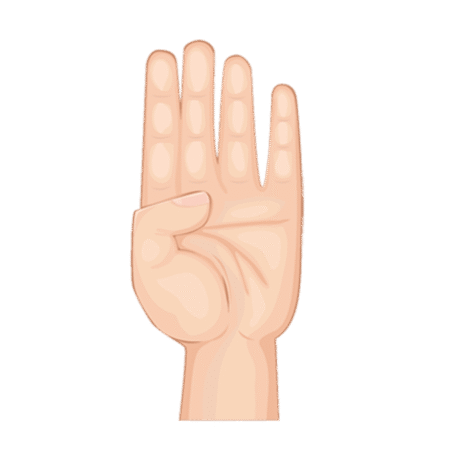
1, 2, 3, 4... That familiar hand signal starts with the AP muscle pulling your thumb into the palm.
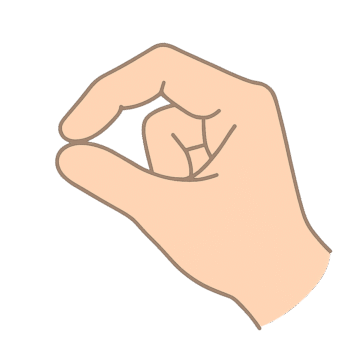
Known as the pinching muscle. It powers the grip between your thumb and forefinger.
What Are The Adductor Pollicis Pain Symptoms?
When the adductor pollicis is irritated, simple tasks become uncomfortable or make your hand feel unreliable.
- Dull aching or cramping in the middle of the palm
- Aching in the thumb pad, the base of the thumb, which can extend into the thumb. The pain can also be sharp.
- Feelings of weakness and instability in the thumb, especially when pinching or gripping
- Hand and thumb fatigue when doing repetitive tasks
- Difficulty holding objects between the thumb and fingers
- Burning sensations when the hands become fatigued
You may notice pain or weakness while doing everyday tasks, especially those that require pinching or gripping small objects. These symptoms are easy to ignore at first, but they tend to worsen over time.
What Causes Adductor Pollicis Pain?
The adductor pollicis muscle is easily overworked. It doesn't take much to push it into irritation or fatigue. Watch out for:
- Activities requiring repetitive use (texting, gaming, or typing)
- Writing, gripping tools, and activities requiring intricate movements of the thumb
- Using the thumb to apply direct downward pressure, ie, therapists and doctors
- Direct trauma to the thumb and thumb pad
- Nerve issues, especially when the ulnar nerve is involved
Activities and sports that affect the adductor pollicis:
- Gardening - Pulling those pesky weeds taxes the thumb repeatedly
- Crafting - Artistic painting, sewing, knitting, crocheting require small repetitive motions
- Cooking - Chopping, peeling, and cutting
- Gaming and Keyboarding - A definite setup for repetitive thumb strain.
- Racket sports - Repetitive hard gripping overworks the thumb and thumb base
- Rock Climbing - Repetitive grips and pinching motions
- Violin, cello, guitar, and keyboard/piano players - Requires the thumb to hold a steady position for long periods, taxing the muscle.
- Doctors, PTs, ATs, and MTs who often use squeezing and pincher grips to diagnose and treat various ailments experience pain around the thumb and wrist.
Explain Trigger Points In the Adductor Pollicis Muscle
Trigger points are small, hyper-irritable spots in the muscles that can create a surprising amount of pain. In the adductor pollicis, trigger point pain often feels like:
- A sore or cramped spot deep in your palm
- A radiating ache toward the thumb or wrist
- A sense of arthritis or nerve pain
- Grip weakness or hand clumsiness, especially during intricate tasks
Referred Pain Pattern:
Trigger points in the adductor pollicis often refer sensations to surrounding areas, making it hard to pinpoint the true cause.
- Across your palm
- Into the thumb and thumb pad
- Throughout the thumb, creating pressure, weakness, and fatigue
Trigger points can masquerade as arthritis, carpal tunnel, or even nerve damage, but the pain often fades quickly when the trigger points are treated directly.
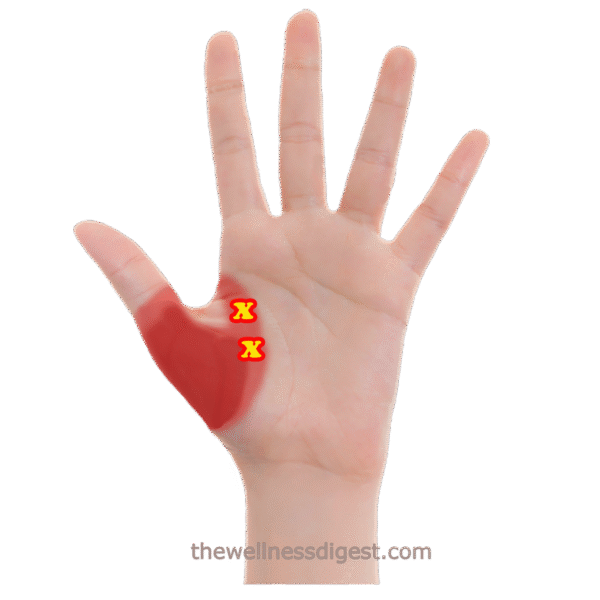
If this pain pattern is familiar, search for small tender lumps in these areas.
Self-Treatment For Adductor Pollicis Trigger Points
- Using your opposite thumb, press into the thumb pad, the web between the thumb and index finger, and the palm under the first and second fingers.
- You are searching for very tender, painful areas.
- If found, apply pressure for 10 seconds, then release. Repeat 3 times each session. The pressure should feel like “hurts so good, not sharp or jarring. Ease off if it feels like too much.
- Repeat treatments 3 times throughout the day, continuing until the pain and knots are gone.
What Helps Relieve Adductor Pollicis Muscle Pain?
Here are some easy ways to manage pain and tightness:
- Rest the thumb and hand. Take breaks. Stretch out the muscles in your hand, concentrating on those around the thumb and palm.
- Did you overdo it? Grab a cold pack to offset inflammation and reduce pain.
- Look for pens, styluses, and tools with larger hand grips.
- Use a wrist brace/thumb stabilizer when there is a risk of muscle overuse.
- Place a small rubber ball on a table and roll the thumb pad and palm. Use your opposite hand to knead the thumb pad and massage the palm.
- Topical creams: I recommend Biofreeze for injuries and strains. Sombra Warming Gel is best for chronic pain and arthritis.
Stretching and Strengthening Exercises
Stretches To Relieve Tightness
- Thumb Web Stretch - Stretch the thumb away from the index finger using the other hand to gently pull the thumb outward. Hold 20–30 seconds, repeat a few times daily
- Palm-On-Table Stretch - Press hand flat on a table, gently stretch thumb away from the fingers. Focus on the opening of the web space. Repeat 5 times once a day.
Strengthening Exercises To Increase Mobility
Rubber Band Expansion
- Wrap a thick rubber band around your fingers and thumb. The rubber band should sit just below your top knuckle.
- Slowly open your hand against the resistance, then release.
- Do 10 reps, 2 sets.
Hand Putty or Ball Pinch
- Using hand putty, squeeze the putty using your thumb and fingers in a pinching motion. If you are using a hand therapy ball, squeeze with medium pressure between the thumb and fingers. Some pain is normal, but if it is extremely painful, let up on the pressure or stop.
- Hold for 5 seconds. Repeat up to 5 times.
If you are having pain in the thumb pad and base of the thumb, try doing these exercises once a day until the pain subsides. If you find the exercises painful or your pain increases, stop and consult with a therapist or physician.
How Can You Prevent Adductor Pollicis Pain?
Preventing pain in the adductor pollicis starts with awareness. This muscle works hard during typing, texting, gripping, and precision movements. Giving it breaks and support can make a big difference.
- Take micro breaks during any task that uses your thumb a lot. Stretch out the muscle.
- Use a supportive thumb brace if you’re typing, gaming, or lifting for long periods.
- Warm up your hands before workouts or long work sessions.
- Watch your wrist posture. Keep it neutral and flat at the wrist/forearm connection, not bent.
- Use thicker pens, styluses, and tools with larger handles to reduce pinch pressure.
Frequently Asked Questions
Q: Why does the base of my thumb and palm hurt?
A: Pain at the base of the thumb and into the palm may be caused by trigger points or overuse in the adductor pollicis. It can feel like cramping, fatigue, or even mimic arthritis or carpal tunnel.
Q: Can the adductor pollicis cause grip weakness?
A: Yes. When this muscle is tight or strained, your thumb may feel unstable or weak when pinching or holding small items. You might drop objects more often or feel clumsy during fine motor tasks.
Q: Is adductor pollicis pain a sign of carpal tunnel syndrome?
A: The symptoms can feel similar. The adductor pollicis is innervated by the ulnar nerve, different from the median nerve, which is involved in the carpal tunnel. However, both conditions can occur together or be confused with one another.
Check the other muscles that might contribute to these conditions:
Areas of Pain
Abdominal Pain | Ankle Pain | Arm (Lower) Pain | Arm (Upper) Pain | Back (Low) Pain | Back (Upper) Pain | Chest Pain | Elbow Pain | Foot Pain | Groin Pain | Hand Pain | Head Pain | Hip Pain | Knee Pain | Leg (Low) Pain | Leg (Upper) Pain | Neck Pain | Pelvic Pain | Shoulder Pain | Wrist Pain
Trusted Sources for Muscle Anatomy & Pain Patterns
These are the top 6 sources I use to verify muscle function, pain referral patterns, treatment techniques, and anatomical structure. My experience as a massage therapist informs the interpretation and practical application of this information.
- Travell, J. G., & Simons, D. G. (1983). Myofascial Pain and Dysfunction: The Trigger Point Manual, Volume 1 – The Upper Extremities. Williams & Wilkins.
- Travell, J. G., & Simons, D. G. (1992). Myofascial Pain and Dysfunction: The Trigger Point Manual, Volume 2 – The Lower Extremities. Williams & Wilkins.
- Davies, C., & Davies, A. (2013). The Trigger Point Therapy Workbook: Your Self-Treatment Guide for Pain Relief (3rd ed.). New Harbinger Publications.
- Muscolino, J. E. (2016). Kinesiology: The Skeletal System and Muscle Function (3rd ed.). Mosby.
- Clay, J. H., Allen, L., & Pounds, D (2015). Basic Clinical Massage Therapy: Integrating Anatomy and Treatment (3rd ed.). Lippincott Williams & Wilkins.
- Dalton, E. (n.d.). Myoskeletal Alignment Techniques. Retrieved from https://erikdalton.com
